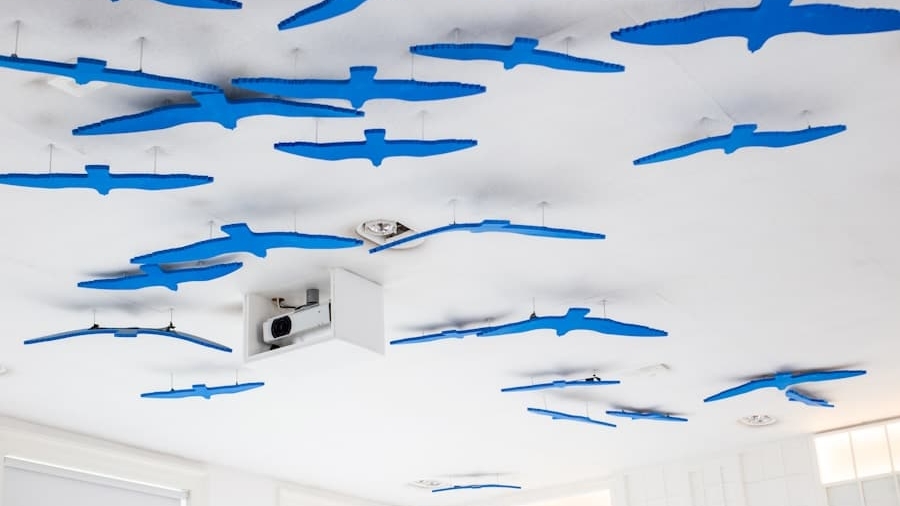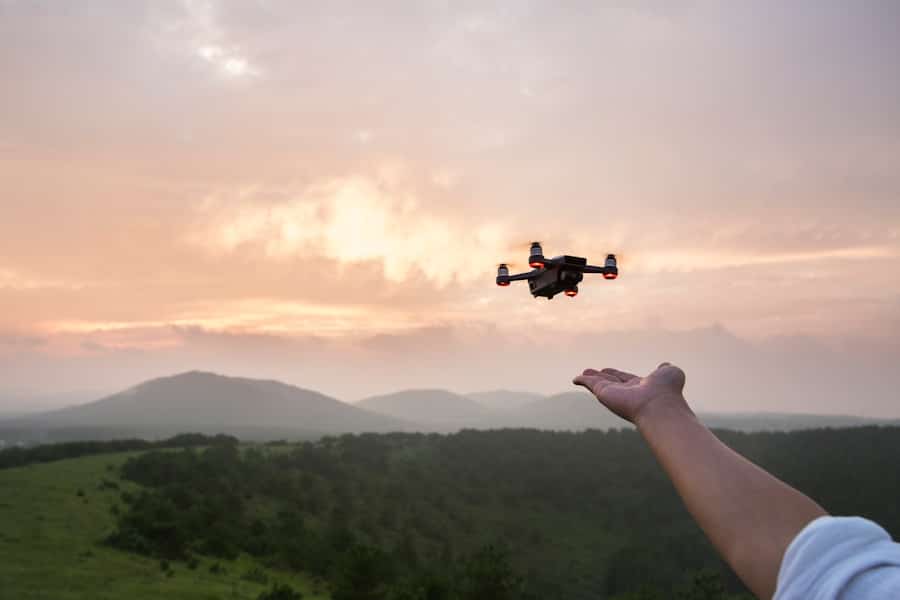The advent of drone technology has revolutionized various sectors, from agriculture to logistics, but its integration into household environments is a relatively recent phenomenon. Household drones, once a novelty primarily associated with recreational use, have evolved into sophisticated tools capable of performing a myriad of tasks. These unmanned aerial vehicles (UAVs) are now being designed not just for leisure but for practical applications that enhance everyday life.
As technology continues to advance, the potential for household drones to automate routine tasks is becoming increasingly apparent, promising to transform how we manage our homes. The concept of household drones encompasses a wide range of functionalities, from simple aerial photography to complex automated systems that can assist with chores and monitoring. The growing interest in smart home technology has paved the way for drones to become integral components of home automation systems.
As consumers seek more efficient ways to manage their living spaces, the demand for drones that can perform specific tasks—such as surveillance, delivery, and even maintenance—has surged. This article delves into the current uses, advancements, future potential, challenges, and ethical considerations surrounding household drones, providing a comprehensive overview of their role in task automation.
Key Takeaways
- Household drones are becoming increasingly popular for task automation, offering convenience and efficiency in various daily activities.
- Current uses of household drones include tasks such as cleaning, security monitoring, and package delivery, providing a wide range of benefits for homeowners.
- Advancements in household drone technology are leading to improved battery life, better obstacle avoidance, and enhanced control features, making them more reliable and user-friendly.
- Potential future uses of household drones for task automation may include gardening, pet care, and even personal transportation, revolutionizing the way we manage our homes and daily lives.
- Challenges and concerns for the future of household drones include privacy issues, safety risks, and potential misuse, highlighting the need for responsible regulation and ethical considerations in their development and use.
Current Uses of Household Drones for Task Automation
Household drones are currently employed in various capacities that significantly enhance the efficiency of daily tasks. One of the most prominent applications is in home security. Drones equipped with high-definition cameras can patrol properties, providing real-time surveillance and alerts to homeowners about any unusual activity.
For instance, companies like Ring have begun integrating drone technology into their security systems, allowing users to deploy drones to specific areas of their property remotely. This capability not only offers peace of mind but also enables homeowners to monitor their surroundings from anywhere via smartphone applications. In addition to security, household drones are increasingly being utilized for delivery services.
Companies such as Amazon and Google have been experimenting with drone delivery systems that promise to revolutionize how goods are transported to consumers. In urban settings, drones can navigate through traffic and deliver packages directly to doorsteps, significantly reducing delivery times. This application is particularly beneficial for time-sensitive deliveries, such as medical supplies or groceries.
The convenience offered by drone deliveries is appealing to busy households looking for efficient solutions to their shopping needs.
Advancements in Household Drone Technology
The technological advancements in household drones have been remarkable over the past few years. Modern drones are now equipped with advanced sensors, artificial intelligence (AI), and machine learning capabilities that enhance their functionality and usability. For example, many drones now feature obstacle avoidance systems that allow them to navigate complex environments without crashing into objects.
This technology is crucial for household use, where space can be limited and obstacles abound. Moreover, improvements in battery life and flight time have made household drones more practical for everyday tasks. Earlier models often struggled with short flight durations, limiting their usability.
However, recent innovations have led to batteries that can sustain longer flights, enabling drones to cover larger areas without needing frequent recharges. Additionally, the development of lightweight materials has made drones more agile and easier to handle. These advancements not only improve performance but also expand the range of tasks that household drones can effectively undertake.
Potential Future Uses of Household Drones for Task Automation
Looking ahead, the potential uses of household drones for task automation are vast and varied. One promising area is in home maintenance and repair. Imagine a drone equipped with tools capable of performing minor repairs or inspections on rooftops or hard-to-reach areas around the house.
Such drones could autonomously conduct routine checks on gutters or solar panels, alerting homeowners to any issues before they escalate into costly repairs. This proactive approach could save homeowners both time and money while ensuring that their properties remain in optimal condition. Another exciting possibility lies in the integration of drones with gardening and landscaping tasks.
Future household drones could be designed to assist with planting seeds, watering plants, or even monitoring garden health through advanced imaging technologies. Equipped with sensors that analyze soil moisture levels and plant health, these drones could provide real-time data to homeowners, allowing them to make informed decisions about their gardening practices. This level of automation could not only enhance the efficiency of maintaining outdoor spaces but also promote sustainable gardening practices by optimizing resource usage.
Challenges and Concerns for the Future of Household Drones
Despite the promising future of household drones, several challenges and concerns must be addressed before they can be fully integrated into everyday life. One significant issue is privacy. As drones become more prevalent in residential areas, concerns about surveillance and data collection will likely intensify.
Homeowners may worry about unauthorized drone flights capturing images or videos of their properties without consent. Striking a balance between the benefits of surveillance for security purposes and the right to privacy will be a critical challenge for regulators and manufacturers alike. Another concern revolves around safety and reliability.
Drones operating in residential areas must adhere to strict safety standards to prevent accidents or malfunctions that could lead to injuries or property damage. The potential for technical failures—such as loss of control or battery depletion mid-flight—poses risks that need to be mitigated through rigorous testing and regulation. Additionally, public acceptance of household drones will depend on addressing these safety concerns transparently and effectively.
Regulation and Ethics of Household Drones
The regulation of household drones is a complex issue that involves balancing innovation with public safety and ethical considerations. Governments around the world are grappling with how best to regulate drone usage in residential areas while fostering technological advancement. In many countries, existing aviation regulations do not adequately address the unique challenges posed by household drones, leading to calls for new frameworks that specifically cater to this emerging technology.
Ethical considerations also play a significant role in shaping regulations surrounding household drones. Issues such as data privacy, consent for surveillance, and the potential for misuse must be carefully considered by policymakers. For instance, regulations may need to establish clear guidelines on how data collected by drones can be used and shared, ensuring that homeowners’ rights are protected while still allowing for beneficial applications like security monitoring.
Engaging stakeholders—including manufacturers, consumers, and privacy advocates—in discussions about drone regulations will be essential for developing comprehensive policies that address these concerns.
Integration of Household Drones with Smart Home Technology
The integration of household drones with smart home technology represents a significant leap forward in home automation capabilities. As smart home devices become increasingly interconnected through platforms like Amazon Alexa or Google Home, the potential for drones to interact seamlessly with these systems is becoming more feasible. For example, a homeowner could program their drone to conduct routine security checks at specific times or respond to alerts from other smart devices within the home.
Moreover, this integration could extend beyond security applications. Imagine a scenario where a drone works in tandem with smart irrigation systems in a garden; it could monitor plant health and adjust watering schedules based on real-time data collected from soil sensors. Such synergies would not only enhance efficiency but also create a more cohesive smart home ecosystem where devices communicate and collaborate effectively.
The Future Outlook for Household Drones for Task Automation
As we look toward the future, it is clear that household drones hold immense potential for transforming task automation within our homes. With ongoing advancements in technology and increasing integration with smart home systems, these devices are poised to become indispensable tools for managing daily life more efficiently. However, realizing this potential will require addressing significant challenges related to privacy, safety, regulation, and ethics.
The journey toward widespread adoption of household drones will undoubtedly involve navigating complex landscapes of public perception and regulatory frameworks. Nevertheless, as consumers continue to seek innovative solutions for enhancing their living environments, the future outlook for household drones remains bright. With careful consideration of the associated challenges and a commitment to responsible development, household drones could soon become an integral part of our everyday lives, streamlining tasks and enriching our home experiences in ways we have yet to fully imagine.
If you are interested in the latest technology trends, you may also want to check out this article on Recode, a technology news website owned by Vox Media.
FAQs
What are household drones for task automation?
Household drones for task automation are small unmanned aerial vehicles designed to perform various household tasks such as cleaning, surveillance, and delivery.
What tasks can household drones automate?
Household drones can automate tasks such as vacuuming, mopping, lawn mowing, surveillance, package delivery, and even pet care.
What are the potential benefits of using household drones for task automation?
Using household drones for task automation can lead to increased efficiency, time savings, and convenience for homeowners. It can also reduce the need for manual labor and provide access to hard-to-reach areas.
What are the challenges and limitations of household drones for task automation?
Challenges and limitations of household drones for task automation include battery life limitations, weight carrying capacity, regulatory restrictions, privacy concerns, and potential safety risks.
What is the current state of household drones for task automation?
Household drones for task automation are still in the early stages of development and adoption. While there are some products available on the market, widespread adoption and integration into everyday household tasks are still in the future.



